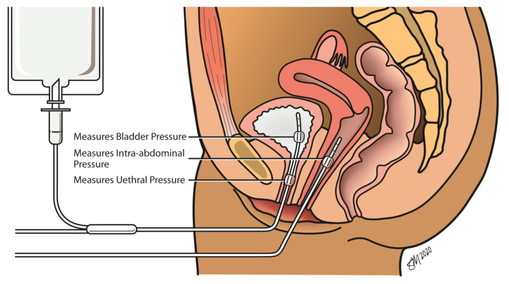What Is Urodynamics?
Urodynamics is a test that measures how well your bladder, urethra, and pelvic muscles are working. If you’re experiencing symptoms like frequent urination, urgency, leakage, or trouble emptying your bladder, this test helps us find out why.
Think of it like an EKG for your bladder—it gives us a detailed look at how your urinary system functions in real time.
Why You Might Need Urodynamics
Urodynamic testing is often recommended if you’re dealing with:
-
Urinary incontinence (leaking urine)
-
Overactive bladder (urgency and frequency)
-
Difficulty starting or maintaining a urine stream
-
Feeling like you can’t empty your bladder completely
-
Bladder problems due to neurological conditions
-
Pre-surgical evaluation for incontinence or pelvic prolapse
The results help guide treatment and ensure you get the right care—whether that means medication, physical therapy, or surgery.
 What Happens During the Test?
What Happens During the Test?
Urodynamics is done in our office and usually takes 30 to 60 minutes. Here’s what to expect:
-
A thin catheter is gently inserted into your bladder to fill it with sterile fluid and measure pressure.
-
A second catheter is placed in the rectum to measure abdominal pressure.
-
Two small sticky sensor pads are placed on your inner thighs near the groin to track pelvic floor muscle activity.
As your bladder fills, we’ll ask you how it feels—when you first sense fullness, when you feel the urge to go, and when it becomes uncomfortable.
When your bladder is full, you’ll be asked to urinate while the equipment records how well your bladder and urethra are working together.
The test is not painful, though you may feel irritation, pressure or temporary discomfort with the catheter placement.
How to Prepare
-
Arrive with a comfortably full bladder unless told otherwise.
-
You can eat and drink normally beforehand.
-
Let us know if you have a urinary tract infection or are currently on antibiotics.
-
Wear comfortable clothing that’s easy to change in and out of.
After the Test
You can resume normal activities right away. Some people feel mild burning with urination for a day or two—this usually goes away quickly. Drinking extra water can help flush things out.
Call us if you develop fever, chills, or increased discomfort after the test.
Questions? We’re Here to Help
If you have concerns about your urinary symptoms or want to learn more about urodynamics testing, call us at 207-518-6600 or request an appointment online.
